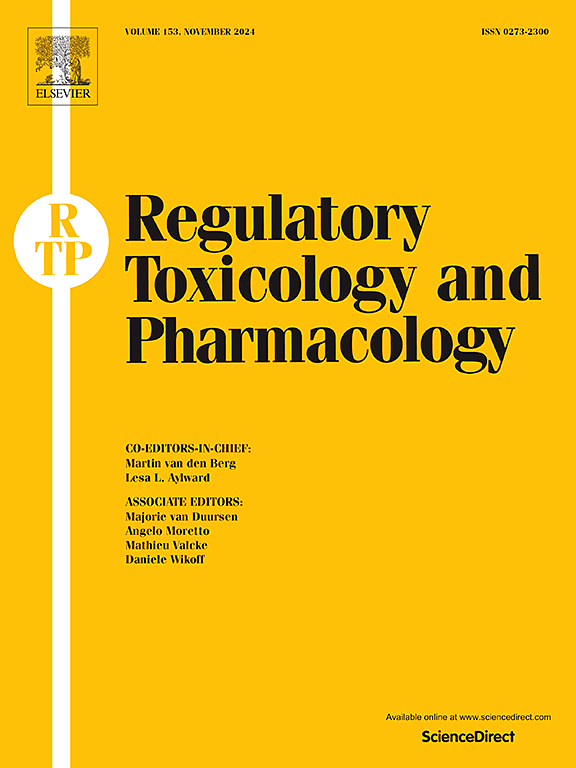加强下一代风险决策:当代回顾
IF 3.5
4区 医学
Q1 MEDICINE, LEGAL
引用次数: 0
摘要
风险决策本身就需要考虑与处理令人关切的重大健康和环境风险有关的基本原则和其他因素。风险决策过程已从线性框架演变为更加综合和动态的战略。最近的范围审查描绘了这一演变,并展示了向更全面和更复杂的方法的过渡。“下一代风险决策”一词通过将风险评估、管理和风险决策中涉及的沟通的所有方面结合起来,从而超越了最近阐明的下一代风险评估框架,抓住了这些当代战略。虽然这一范围审查包括最佳实践和风险决策的十个属性,但它没有解决如何在为下一代风险决策制定战略时考虑这些因素。这篇当代综述通过讨论决策理论的作用来解决这一限制,然后提出了一个模型来描述、分类和可视化这十个考虑因素:远见和规划、研究和开发、监管、风险、上游和下游属性、风险文化、ONE Health镜头、广泛的监管因素、风险管理和风险沟通。然后,利用自上而下、自下而上的优势、劣势、机会和威胁分析,对基于现实主义范式的模型和相应的考虑因素进行分析,并充分整合风险科学策略,以进行下一代风险决策。本文章由计算机程序翻译,如有差异,请以英文原文为准。
Strengthening next generation risk decision-making: A contemporary review
Risk decision-making inherently requires consideration of fundamental principles and other factors pertinent for addressing important health and environmental risks of concern. The risk decision-making process has evolved from linear frameworks to more integrated and dynamic strategies. A recent scoping review mapped this evolution and demonstrated a transition to more holistic and complex approaches. The term next generation risk decision-making captures these contemporary strategies by incorporating all aspects of risk assessment, management, and communication involved in risk decision-making, thereby going beyond recently articulated next generation risk assessment frameworks. While this scoping review included best practices and ten attributes of risk decision-making, it did not address how to consider these factors when developing strategies for next generation risk decision-making. This contemporary review addresses this limitation by discussing the role of decision theories prior to presenting a model for characterizing, categorizing, and visualizing these ten considerations: foresight and planning, research and development, regulatory, risk, upstream and downstream attributes, risk culture, ONE Health lens, broad regulatory factors, risk management, and risk communication. The realist paradigm-based model and corresponding considerations are then analyzed using a strengths, weaknesses, opportunities, and threats analysis of top-down, bottom-up, and fully integrated risk science strategies to next generation risk decision-making.
求助全文
通过发布文献求助,成功后即可免费获取论文全文。
去求助
来源期刊
CiteScore
6.70
自引率
8.80%
发文量
147
审稿时长
58 days
期刊介绍:
Regulatory Toxicology and Pharmacology publishes peer reviewed articles that involve the generation, evaluation, and interpretation of experimental animal and human data that are of direct importance and relevance for regulatory authorities with respect to toxicological and pharmacological regulations in society. All peer-reviewed articles that are published should be devoted to improve the protection of human health and environment. Reviews and discussions are welcomed that address legal and/or regulatory decisions with respect to risk assessment and management of toxicological and pharmacological compounds on a scientific basis. It addresses an international readership of scientists, risk assessors and managers, and other professionals active in the field of human and environmental health.
Types of peer-reviewed articles published:
-Original research articles of relevance for regulatory aspects covering aspects including, but not limited to:
1.Factors influencing human sensitivity
2.Exposure science related to risk assessment
3.Alternative toxicological test methods
4.Frameworks for evaluation and integration of data in regulatory evaluations
5.Harmonization across regulatory agencies
6.Read-across methods and evaluations
-Contemporary Reviews on policy related Research issues
-Letters to the Editor
-Guest Editorials (by Invitation)

 求助内容:
求助内容: 应助结果提醒方式:
应助结果提醒方式:


